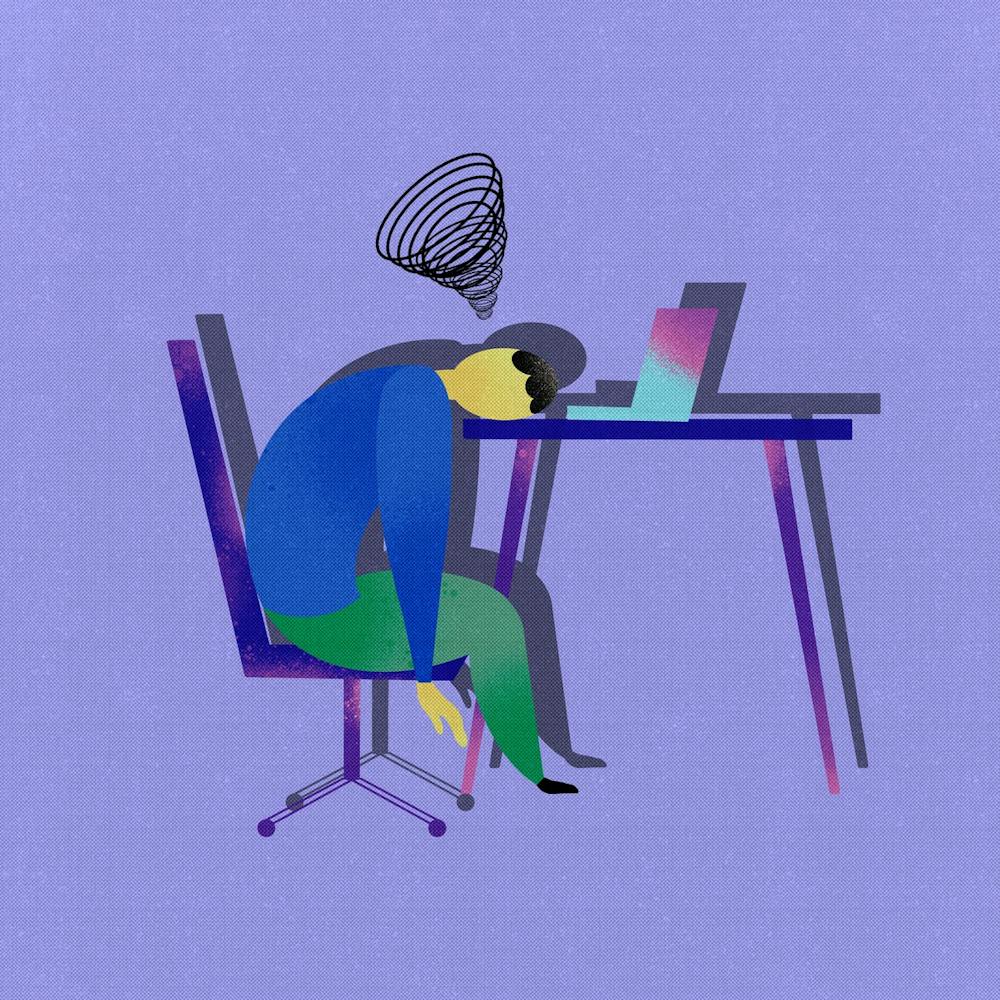Across the country, college students are struggling with a sense of exhaustion and a decline in productivity and motivation that has worsened throughout the COVID-19 pandemic. These symptoms are typical of a phenomenon known as burnout, which occurs when individuals become unable to cope with their stressful lifestyle or are constantly overworked.
According to the International Classification of Diseases 11th Revision, which is published by the World Health Organization and serves as a guideline for classifying physical and mental illness, burnout is defined by three categories. These categories are feelings of fatigue and tiredness; feelings of dissociation, discouragement or pessimism with regards to work; and feeling unproductive or as though the work one does has no meaning. Burnout may present differently in different people.
Third-year College student Thao Nguyen said she has certainly experienced burnout in the past.
“It just feels like being extremely unmotivated and just being over classes, not wanting to do anything,” Nguyen said.
The COVID-19 pandemic has added a new layer of complexity to burnout. Jamie Leonard, the director of Student Health's Office of Health Promotion, said the pandemic has created an additional source of strain.
“Some students may feel as if their social supports aren't as strong as they were prior to the pandemic,” Leonard said in an email statement to The Cavalier Daily. “Also, some students are taking on more responsibilities or obligations if they feel as if they're making up for ‘lost time’ which can add additional stress.”
Nguyen said she has noticed the increase in obligations that Leanord cited.
“Now I have to worry about other things on top of just schoolwork,” Nguyen said. “So then it's just compounding, and it's making [my burnout] a lot worse.”
Burnout also causes biological changes to the structure of the brain — studies have connected burnout to an increase in the size of the amygdala — which processes psychosocial stress stimuli — a decrease in the size of the caudate — which plays a role in learning, memory, reward and motivation — and thinning of the medial prefrontal cortex, which modulates stress stimuli. Stress has been shown to create a cyclic reaction in which experiencing stress leads to high concentrations of glutamate and cortisol, which damages the medial prefrontal cortex and in turn harms prefrontal inhibition of the amygdala, leading to additional excitation of the amygdala.
While burnout does have far-reaching effects, there are numerous ways that students can address it. Leonard suggested students learn how to set boundaries, prioritize exercise, maintain a balanced diet, get enough socialization and get adequate amounts of sleep.
“Reevaluate your college life — are you living a life that is in alignment with your values?” Leonard said.
Kristy Simpkins, the assistant director of the Office of Health Promotion’s WahooWell program, also provided some suggestions for students.
“Set boundaries with your time; share with trusted peers, friends or family how you’re feeling, you’re not alone; take breaks and reward yourself; go easy on yourself, have self-compassion; find things to look forward to or that bring you joy,” Simpkins said in an email statement to the Cavalier Daily.
Resources provided by the University that can address burnout include Hoos Focused, which provides help with learning how to maximize time, maintain attention and practice self care. WahooWell, which involves a consultation to determine ways to identify well-being goals and work towards enhancing them, is another resource. Simpkins and Leonard also recommended SilverCloud, a self-guided mental health resource, and InsightTimer, which offers resources for self-guided meditation. Additionally, the University’s Guides for Well-being has a list of resources for students to access.
Nguyen said that the University could do more to support students’ mental health, starting with ensuring that professors understand that students have different learning needs and finding a way to distribute exam dates more evenly across departments.
Prior to the pandemic, many students were familiar with the feeling that a stigma exists around discussing mental health issues, but Leonard noted that there has since been a shift in attitudes. “One of the silver linings of the pandemic is students' greater understanding about the importance of mental well-being and the need to be proactive in addressing it,” said Leonard.
Simpkins noted that supporting one another is one of the best ways to fight stigma.
“It’s important to recognize that if you’re struggling with motivation and burnout, because of the collective experience we’re all going through, you’re in the majority,” said Simpkins. Nguyen also noted that she felt comfortable talking about feeling burnt out with her friends.







